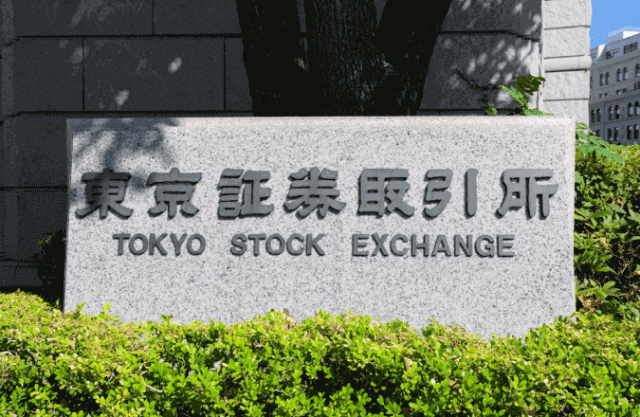How to trade the Australia 200 index: a complete guide

Learn all about what the Australia 200 is and how to trade it, including when the Australia 200 is open and a list of Australia 200 companies.
What is the Australia 200?
The Australia 200 is a stock index comprising the 200 largest stocks by float-adjusted market capitalisation listed on the Australian Securities Exchange, or ASX. The index represents approximately 81% of Australia's total share market capitalisation.
Regarded as the primary indicator of the Australian equity market, the Australia 200 is maintained by Standard & Poor’s. Since its inception in 2000, it has been the benchmark for assessing Australia’s overall market performance. The index offers traders an efficient way to diversify portfolios through a single transaction, enabling exposure to major Australian companies without needing to invest directly in each company's stock.
To maintain its benchmark status, the Australia 200 applies stringent eligibility criteria for its constituent companies, which must meet specific liquidity, market capitalisation, and listing standards. It is rebalanced quarterly by a five-member Index Committee to ensure these standards are consistently met.
The Australia 200 is particularly favoured by traders due to its significant market price movements. Known for its high volume and volatility, it attracts numerous day traders aiming to capitalise on short-term price changes. It also forms the basis for a variety of financial derivative products.
However, it's important to note that with high volatility comes the potential for large, fast losses. Understanding the risks and employing a robust risk management strategy is crucial when trading.
What is Australia 200 performance history?
The Australia 200 Index is known for its volatility, often more so than its UK and US counterparts.
The index debuted on the Australian Securities Exchange on March 31, 2000, with an initial value of 3,133.3—mirroring the broader All Ordinaries Index at the time.
The Australia 200 hit an all-time low of 2,753 on February 3, 2003. It then gained significant momentum, reaching 6,000 points for the first time on February 15, 2007, and peaked at 6,748 points on November 1, 2007, before the global financial downturn. During the financial crisis of 2008-2009, the index dropped sharply, falling to 3,145 points by February 2009.
Following this low, the Australia 200 mostly trended upward for over a decade, despite some brief downturns. It surpassed the 7,000-point mark on January 16, 2020, reaching an all-time high of 7,162.5 points on February 20, 2020.
In 2023, the S&P/Australia 200 demonstrated remarkable resilience, closing the year up by 7.8% at 7,591 points. Despite navigating through significant challenges including supply chain disruptions, rising interest rates, and cost-of-living pressures, the index managed a strong finish.
Past performance is not a reliable indicator of future results.
What are the Australia 200 trading hours?
The Australia 200 is generally tradeable during the opening hours of the Australian Securities Exchange, which is open Monday-Friday at the following times:
-
Pre-market session: 7am-10am AEST (9pm-midnight UTC)
-
Regular trading: 10am-4pm AEST (midnight-6am UTC)
-
Post-market session: 4pm-4.10 PM AEST (6am-6.10am UTC)
With Capital.com, you can trade the Australia 200 using CFDs Monday to Friday, from 11.50pm-6.30am, and 7.10am-10pm (UTC). Check our world market opening times for more information.
What companies are in the Australia 200?
The Australia 200 Index is made up of 200 companies operating in a range of sectors. The financials and materials sectors are particularly well-represented by the Australia 200 constituents.
Some of the world-renowned businesses included in the Australia 200, among others, are BHP Group Ltd (BHP), Commonwealth Bank of Australia (CBA) and ANZ Group Holdings Ltd (ANZ).
The index is rebalanced on a quarterly basis, in March, June, September and December. However, if a significant event occurs, such as merger or delisting, an intra-quarter rebalance may be conducted.
How to trade the Australia 200
The Australia 200 index can be a great way to gain exposure to the Australian stock market without having to take a position on the performance of individual companies.
However, like any other stock index, you can’t buy or sell the Australia 200 like a share. You’ll need to use a derivative, such as a CFD, to take your position.
A CFD is a contract between a broker and a trader. As part of the contract, one party agrees to pay the other the difference in the value of a security between the opening and closing of the trade. Therefore, when you trade the Australia 200 using CFDs, you speculate on the direction of the underlying index’s price without actually owning it.
You can find out more about the differences between trading and investing with our helpful guide.
Opening a CFD trade on the Australia 200 enables you to trade the index in both directions; you can hold a long or short position, depending on whether you expect the price to rise or fall. CFDs are typically traded on margin, which means that you can gain exposure to larger positions with a relatively small outlay. This amplifies the potential profits, but also the potential losses, of your position.
While leverage can be beneficial, it can also result in large, fast losses as well as gains. CFD trading is complex and high-risk, though it can be a useful addition to the portfolio of an experienced trader. You should understand CFDs, your chosen market and their risks before starting to trade – read our CFD trading guide as a starting point.
Need more support? Try our step-by-step indices course to guide you through the basics to the advanced concepts.
FAQs
What is the Australia 200?
The Australia 200 is a key Australian stock index, comprising the top 200 companies by float-adjusted market cap listed on the ASX, or Australian Securities Exchange. Here at Capital.com, ‘Australia 200’ is the name for our tradeable CFD market on the index.
What affects the Australia 200 price?
The Australia 200 index, like other indices, is influenced by a variety of factors.
Firstly, economic indicators play a crucial role; data such as GDP growth, employment rates, and inflation can directly affect market sentiment and, consequently, the index's performance. For example, strong economic growth tends to boost confidence and drive investments in equities – bolstering the price of the index.
Monetary policy set by the Reserve Bank of Australia (RBA) also impacts the Australia 200. Interest rate changes influence borrowing costs and consumer spending, affecting corporate profits and investor yields. When rates are low, stocks may be more attractive relative to bonds, pushing the index higher.
Additionally, global economic conditions affect the Australia 200. Turbulence in major economies like the USA and China can lead to volatility in Australian markets due to interconnected trade and investment flows.
Commodity prices are another critical factor, given the Australia 200’s heavy weighting towards materials. Fluctuations in the prices of key Aussie exports like iron ore and coal can influence the financial performance of major companies within the index, thereby affecting its overall movement.
What is Australia 200 trading?
Australia 200 trading refers to the buying and selling of an index fund or derivative products that track the performance of the Australia 200. This stock index encompasses the top 200 companies by market capitalisation listed on the Australian Securities Exchange. This type of trading enables you to gain exposure to Australia's leading companies across various sectors with a single transaction.
You can trade the Australia 200 through financial derivatives like exchange-traded funds (ETFs), futures, options, and contracts for difference (CFDs). Each product has its unique characteristics and risk profile, and it’s important to understand these before you trade.
Here at Capital.com, you can trade CFDs on the Australia 200 on our easy-to-use trading platform. Remember, all trading involves risk, and it’s crucial to understand how these products work – and whether you can afford to take the risk of losing your money – before trading.
Visit our other complete guides

How to trade Japan 225
